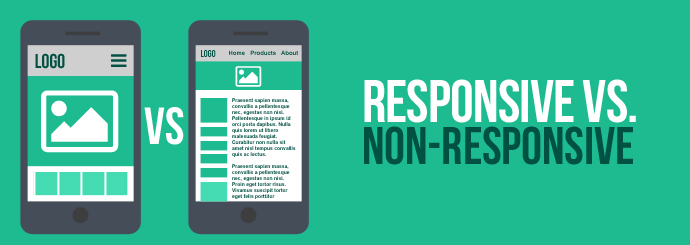How to Optimise a Website for Mobile: Best Practices for Enhanced User Experience
Introduction
In today’s digital landscape, mobile optimization is crucial. More users are browsing the web on their mobile devices than ever before. This shift makes it essential for businesses to ensure their websites are fully optimized for mobile users.
Mobile site speed plays a significant role in both user experience and SEO rankings. Slow-loading pages can frustrate visitors, leading to higher bounce rates and lost opportunities. Google also considers mobile speed when ranking websites, meaning that slower sites may drop in search engine results.
This article will cover the best practices for optimizing mobile website speed and performance. You’ll learn how to improve your website’s mobile responsiveness and ensure a seamless experience for visitors, all while boosting your SEO rankings.
Why Mobile Optimization Matters
Google now uses mobile-first indexing. This means Google primarily evaluates the mobile version of a website when ranking it in search results. If your website isn’t optimized for mobile, it can negatively impact your SEO performance.
Mobile internet usage is growing rapidly. More people access the internet through smartphones and tablets than ever before. This shift has a direct impact on businesses. If your website doesn’t perform well on mobile devices, you could lose a large portion of potential customers.
Mobile performance is also a key ranking factor for SEO. Google takes loading speed, responsiveness, and overall user experience on mobile into account. A slow or poorly designed mobile site can hurt your search engine rankings, making it harder for customers to find your business.
User behavior on mobile sites is different from desktop. On mobile, visitors are less patient with slow-loading pages. High bounce rates and low engagement often follow if your site takes too long to load or isn’t easy to navigate. Optimizing your website for mobile can reduce bounce rates and increase user engagement, which is crucial for both conversions and SEO.

Best Practices for Optimizing Website Speed
Compress Images:
Images can slow down your mobile site if they’re not optimized. Use image formats like JPEG and WebP, which offer good quality with smaller file sizes. Compression tools, such as TinyPNG or ImageOptim, help reduce image file sizes without losing quality. Optimizing images improves loading times and enhances the mobile user experience.
Use Responsive Images:
Responsive images adjust to fit the screen size of the device. Implement the srcset attribute in HTML to serve different image sizes for different screen resolutions. This ensures that mobile users don’t download larger images than necessary, which helps reduce loading times and data usage.
Leverage Browser Caching:
Browser caching stores elements of your website, like images and scripts, on a user’s device. When visitors return, these elements don’t need to be downloaded again, speeding up the site. By setting proper cache expiration dates, you can improve performance for mobile users, especially those returning to your site.
Minimize HTTP Requests:
Every time a mobile site loads, it sends HTTP requests for scripts, images, and CSS files. Reduce the number of these requests by combining files and using inline CSS and JavaScript. Fewer requests mean faster load times, which is crucial for mobile optimization.
Lazy Loading:
Lazy loading only loads images and content when they become visible on the screen. This technique reduces initial load time and saves data for users. By implementing lazy loading, you can speed up the mobile experience without sacrificing content quality.
These best practices are key to learning how to optimize a website for mobile and improving both user experience and SEO performance.
Improve Mobile Performance with Efficient Code
Minify CSS, JavaScript, and HTML:
Minifying your CSS, JavaScript, and HTML reduces the file sizes by removing unnecessary spaces, comments, and characters. This makes your site load faster, which is essential for mobile users. You can use tools like UglifyJS or CSSNano to minify your code and improve mobile performance.
Avoid Render-Blocking Resources:
Render-blocking resources, such as CSS or JavaScript, can delay the page from displaying to users. To improve load times, move non-essential scripts to the bottom of the page or defer them until after the page has loaded. This ensures that the main content loads quickly, providing a better experience for mobile users.
Implement AMP (Accelerated Mobile Pages):
AMP is a framework designed to create fast-loading pages for mobile devices. It strips down unnecessary code and content to boost speed. The main benefit of AMP is significantly faster load times, which can improve user experience and SEO. However, the downside is that it may limit certain features and design elements, which might not suit all websites. Deciding whether to implement AMP depends on your website’s needs and goals.
Use HTTP/2 Protocol:
The HTTP/2 protocol improves website performance by allowing multiple requests to be sent at once over a single connection. This reduces latency and speeds up page load times, especially on mobile devices. Implementing HTTP/2 can make your site faster, enhancing both mobile performance and SEO.
By focusing on efficient code practices, you can optimize your website for mobile, providing users with a faster, more responsive experience.

Utilize Mobile-Optimized Design and Layout
Adopt Mobile-First Design Principles:
Mobile-first design means creating your website for smaller screens before scaling up to larger devices. This approach ensures that your website is optimized for mobile users from the start. By focusing on the mobile experience first, you ensure that it performs well on all devices, improving both usability and performance.
Simplify Navigation:
Mobile users need fast and easy access to information. Simplify your website’s navigation by using clear, concise menus and eliminating unnecessary elements. Make sure key content is accessible with just a few taps. A streamlined navigation system enhances the mobile user experience and reduces bounce rates.
Optimize Touchscreen Interactions:
Mobile users interact with your website through touch gestures like tapping, swiping, and pinching. Design buttons that are large enough to tap easily and ensure that clickable areas are well-spaced. Ensure your website responds to gestures quickly and accurately to create a smooth, intuitive experience for mobile users.
By focusing on mobile-optimized design and layout, you can improve how to optimize a website for mobile. This creates a user-friendly environment that encourages engagement and increases the chances of conversion.
Reduce Redirects and External Requests
Avoid Unnecessary Redirects:
Redirects can slow down your mobile site by adding extra steps for the browser to load the page. Each redirect causes additional HTTP requests and delays the loading process. Minimizing unnecessary redirects helps your site load faster, improving both the mobile user experience and SEO rankings.
Limit Third-Party Scripts:
Third-party scripts, such as ads, social media widgets, or analytics tools, can significantly affect your page load times. These external scripts often rely on servers outside your control, leading to delays if they are slow to respond. Limiting the number of third-party scripts on your site can reduce load times, making your mobile website more efficient.
By reducing redirects and external requests, you help to optimize a website for mobile. This not only speeds up the site but also ensures a smoother, more responsive experience for users on mobile devices.
Test Your Mobile Website’s Performance
Use Google PageSpeed Insights:
Google PageSpeed Insights is a powerful tool that analyzes the speed of your mobile website. It provides detailed reports on your page’s performance, highlighting issues that slow it down. Use this tool to assess your mobile site’s speed and get recommendations for improvement. It’s an essential step in learning how to optimize a website for mobile.
Mobile-Friendly Testing Tools:
To test how well your site performs on mobile devices, use tools like Google’s Mobile-Friendly Test. This tool checks if your website is optimized for mobile screens, ensuring it’s responsive and user-friendly. It also offers suggestions to improve mobile performance, which is crucial for keeping users engaged.
Test with Real Devices:
Testing your website on actual mobile devices is key to getting accurate results. Simulators and emulators may not fully replicate real-world conditions. By testing on physical devices, you can see firsthand how your site performs, identify issues, and ensure a seamless mobile experience.
By regularly testing your mobile website’s performance, you can ensure that it’s fully optimized for mobile users. This will improve user experience, reduce bounce rates, and help your site rank better in search results.

Monitor and Regularly Update Your Mobile Website
Monitor Mobile Performance Metrics:
Regularly monitoring your mobile site’s performance is key to keeping it optimized. Tools like Google Analytics and Lighthouse provide valuable insights into how your site performs on mobile devices. Track metrics like page load time, bounce rate, and user engagement to identify areas that need improvement. By monitoring these metrics, you can make informed decisions on how to optimize a website for mobile.
Keep Up with Updates:
The digital landscape is constantly evolving. Mobile optimization techniques and best practices change over time. Stay up to date with the latest trends and updates to ensure your mobile site remains fast and responsive. Regularly updating your site with new features, security patches, and mobile-friendly design elements will help maintain a smooth, efficient user experience.
By actively monitoring and updating your mobile website, you ensure it continues to perform well and provide a great experience for users. This ongoing attention to mobile optimization helps improve your site’s visibility, engagement, and overall success.
Conclusion
Optimizing for mobile speed and performance is crucial in today’s digital world. A fast, responsive mobile site improves user experience, keeps visitors engaged, and boosts your SEO rankings. Following the best practices we’ve discussed will help ensure your site performs well on mobile devices, reducing bounce rates and enhancing conversions.
Businesses should implement these best practices to create seamless, fast-loading websites that meet the needs of mobile users. By doing so, you not only enhance user experience but also improve your site’s visibility in search results.
For ongoing optimization, regularly test your site’s performance, stay up to date with mobile design trends, and monitor key metrics. This will help you maintain a competitive edge and keep your mobile site running smoothly.
Want to take your mobile optimization to the next level? Check out our mobile optimization services or learn more about website performance at UpNextWeb.com. Let’s help you improve your website’s speed and ensure it’s ready for mobile users.




Leave a Reply
Want to join the discussion?Feel free to contribute!